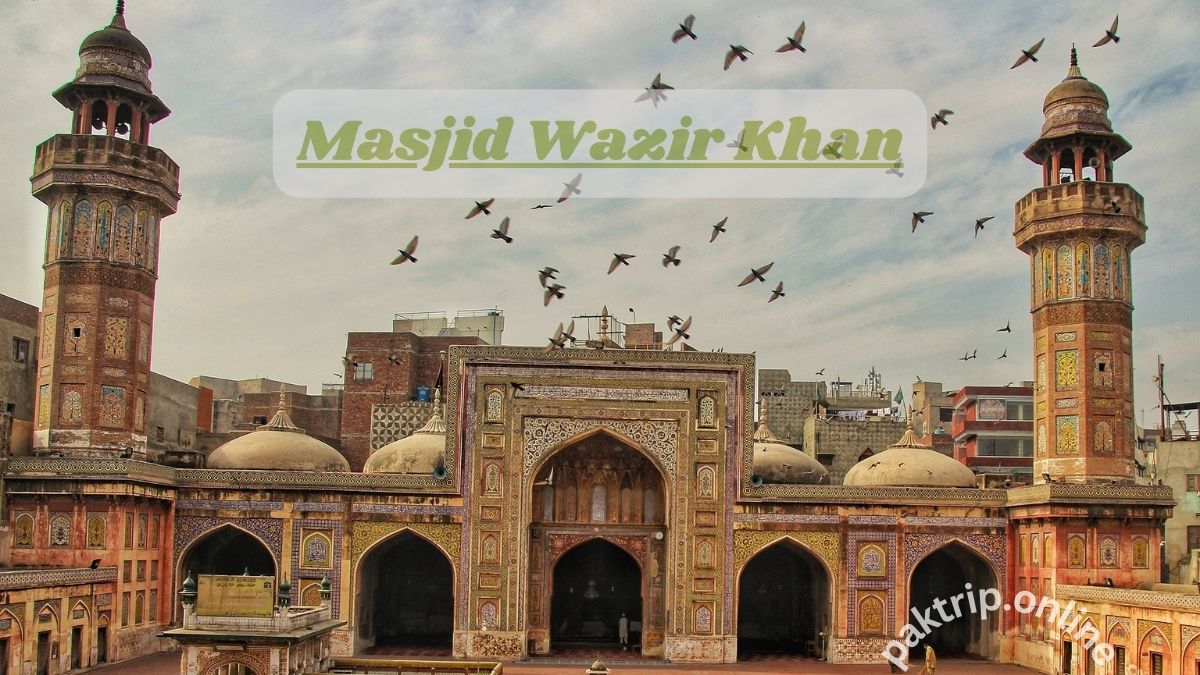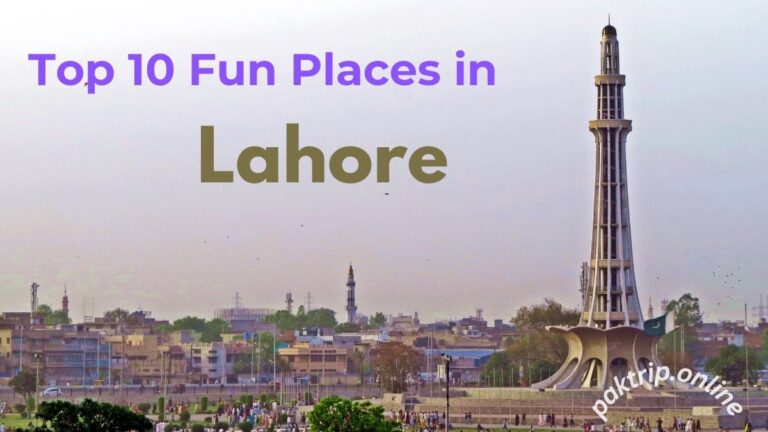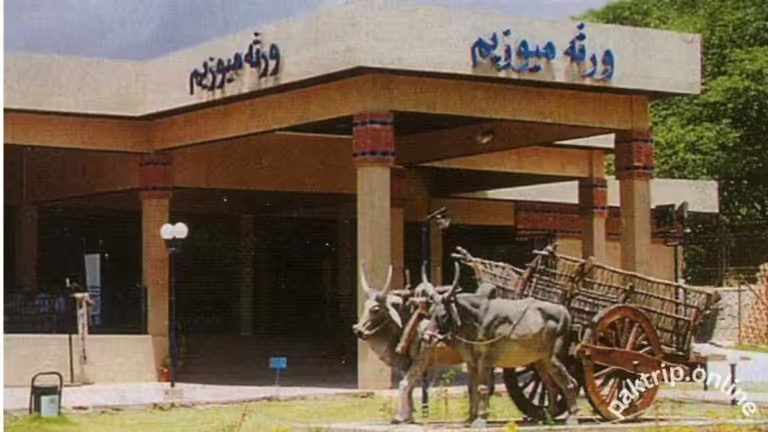Masjid Wazir Khan: A Historical Overview
Masjid Wazir Khan is a monumental mosque located in the heart of Lahore, Pakistan, and is an exquisite example of Mughal architecture. This mosque is not only a place of worship but also a significant symbol of Lahore’s rich cultural heritage. Its history is interwoven with the life of Nawab Wazir Khan, the nobleman who commissioned its construction, and the illustrious Mughal Empire during the reign of Emperor Shah Jahan.
The Legacy of Nawab Wazir Khan
A comprehensive understanding of the history of Punjab is incomplete without acknowledging the impact of Nawab Wazir Khan. He was an educated man with a strong background in leadership, possessing expertise in languages such as Arabic and Persian. His vision was to create a lasting monument that would serve both the spiritual and communal needs of the people in Lahore. The mosque stands as a testament to his commitment to architectural beauty and public service.
Nawab Wazir Khan laid the foundation for the mosque in 1634, and its construction was completed in 1641. This period was marked by a fervent interest in building grand structures, which were seen as reflections of power and cultural sophistication. It was during Shah Jahan’s reign that many other monumental constructions, including the Taj Mahal, were undertaken. The construction of Masjid Wazir Khan was an ambitious project aimed at enhancing the urban landscape of Lahore, which was then being developed into a significant city.
Architectural Grandeur
The architectural style of Masjid Wazir Khan is a hallmark of Mughal design, characterized by intricate patterns and elaborate decorative elements. The mosque boasts a large courtyard that can hold thousands of worshippers, surrounded by beautifully crafted structures that highlight the exceptional skills of the artisans from that era.
Key Features of the Masjid Wazir Khan
Frescoes and Tile Work: The mosque is renowned for its vibrant tile work, primarily Kashi Kari a form of glazed tile decoration. The colors used are rich and varied, with blues, greens, yellows, and reds coming together to create mesmerizing patterns that tell stories of faith and artistry. The frescoes inside the mosque are equally breathtaking, depicting floral motifs and geometric designs that highlight the attention to detail of the craftsmen.
Calligraphy: Calligraphy plays a vital role in the mosque’s aesthetic appeal. Verses from the Quran, crafted in elegant script, adorn the walls, offering a spiritual touch and inviting reflection among the visitors. This artistic expression reflects the deep connection between faith and art in Islamic culture.
The Courtyard and Minarets: The mosque’s courtyard is surrounded by high walls and features elegant minarets that rise majestically. The minarets are adorned with intricate carvings and serve as an iconic feature of the mosque’s skyline. They stand as a beacon of faith, drawing the eyes of both worshippers and visitors.
The Entrance Gate: One of the most striking features of Masjid Wazir Khan is its grand entrance gate, which is adorned with beautiful tile work and carvings. This gate leads visitors into the mosque’s spacious courtyard and serves as a prelude to the beauty that lies within.
The Prayer Hall: The mosque includes a spacious prayer hall, decorated with stunning frescoes and calligraphy. This hall provides a serene environment for worship and reflection, making it a favorite spot for the local community.
Cultural Significance
Masjid Wazir Khan is not just a religious site; it is a cultural hub that has played an important role in the life of Lahore. The mosque has been a gathering place for community events, religious ceremonies, and educational activities. Historically, it served as a center for Islamic learning, where scholars would teach and disseminate knowledge.
Over the centuries, the mosque has remained a symbol of resilience. Even during times of turmoil and change, it has continued to stand strong, attracting people from various backgrounds who come to appreciate its beauty and learn about its history. The mosque is often featured in local festivals and cultural events, making it a living part of Lahore’s heritage.
Modern-Day Importance
Today, Masjid Wazir Khan remains one of the most visited landmarks in Lahore. It attracts not only religious devotees but also tourists, historians, and artists who come to marvel at its beauty and learn about its significance. The mosque’s location near the bustling Kashmiri Bazaar makes it easily accessible, allowing visitors to explore its grandeur amidst the vibrant atmosphere of Lahore.
Visitors often take the opportunity to walk through the mosque’s courtyard, absorb its serene ambiance, and appreciate the intricate details that define its architectural style. The sound of prayers, the sight of worshippers, and the beauty of the mosque create a captivating experience that lingers in the hearts of all who visit.
Festivals and Events
Masjid Wazir Khan also hosts various religious and cultural events throughout the year. Special prayers and gatherings take place during Ramadan, particularly on the night of Laylat al-Qadr. During these times, the mosque becomes a focal point for community worship, with thousands of people coming together to offer prayers and reflect on their faith.
Additionally, cultural festivals celebrating Lahore’s history and arts often incorporate the mosque into their itineraries. These events not only showcase the architectural beauty of the mosque but also highlight its role as a center of community life. Such festivals attract people of all ages, reinforcing the mosque’s significance as a social and cultural hub.
Educational Initiatives
Recognizing the importance of education in preserving the mosque’s legacy, various programs have been introduced to educate the public about its history and significance. Local schools and universities often organize trips to Masjid Wazir Khan, where students learn about Mughal architecture, Islamic history, and the cultural heritage of Lahore.
These educational initiatives foster a deeper understanding of the mosque and its place in Pakistan’s history, encouraging younger generations to appreciate and protect their cultural heritage. Workshops and seminars are also held in the mosque, allowing scholars and artists to share their knowledge and insights with the community.
The Decline and Revival
Despite its grandeur, the mosque faced periods of neglect and decay, particularly following the partition of India in 1947. Many of the surrounding areas were affected by urban development, and the mosque itself suffered from a lack of maintenance. However, in recent years, concerted efforts have been to restore and preserve this historical site.
Restoration Efforts
Government bodies, in collaboration with local NGOs and international organizations, have taken initiatives to restore Masjid Wazir Khan to its former glory. These efforts focus on:
Structural Repairs: Addressing the physical deterioration of the building, including repairing the roof, walls, and decorative elements that have been damaged over the years.
Cleaning and Conservation: Careful cleaning of the frescoes and tile work to prevent further deterioration, ensuring that the artistic details remain vibrant for future generations.
Community Engagement: Involving local communities in preservation efforts, fostering a sense of ownership and pride in their cultural heritage.
Community Engagement and Preservation
The local community plays a crucial role in the ongoing preservation of Masjid Wazir Khan. Residents often volunteer for cleaning and maintenance activities, demonstrating their commitment to safeguarding this historical site. This community involvement fosters a sense of pride and ownership, ensuring that future generations can enjoy the mosque’s beauty and significance.
Efforts to promote sustainable tourism around Masjid Wazir Khan have also emerged. Local artisans and craftsmen are encouraged to showcase their work in nearby markets, allowing visitors to experience the vibrant culture of Lahore while supporting the local economy. This initiative creates a harmonious relationship between tourism and the preservation of cultural heritage.
Challenges Ahead
Despite the positive efforts to restore and preserve Masjid Wazir Khan, challenges remain. Urban development poses a significant threat to the mosque’s surroundings, with new constructions encroaching upon its historical context. The increase in pollution and environmental degradation also threatens the integrity of the mosque’s intricate artwork.
Additionally, raising awareness about the mosque’s historical significance is essential to ensure its preservation. Continued efforts to educate both locals and tourists about the mosque’s rich heritage will play a vital role in safeguarding it for future generations. Collaborative initiatives between the government, NGOs, and the community are crucial in addressing these challenges.
Conclusion
Masjid Wazir Khan is not just a mosque, it is a testament to Lahore’s rich history and cultural heritage. Its exquisite architecture, vibrant colors, and deep-rooted significance make it an enduring symbol of the Mughal era. As we reflect on the journey of this remarkable mosque from its inception under Nawab Wazir Khan to its present-day status as a cultural treasure we are reminded of the importance of preserving such historical sites for future generations.
In celebrating the beauty and legacy of Masjid Wazir Khan, we honor not only the artistry of the Mughal Empire but also the vibrant culture that continues to thrive in Lahore today. This mosque stands as a beacon of hope, faith, and community, inviting all to experience its grandeur and spiritual significance. By recognizing its value, both as a religious site and a cultural landmark, we can ensure that Masjid Wazir Khan remains an integral part of Lahore’s identity for many years to come.







